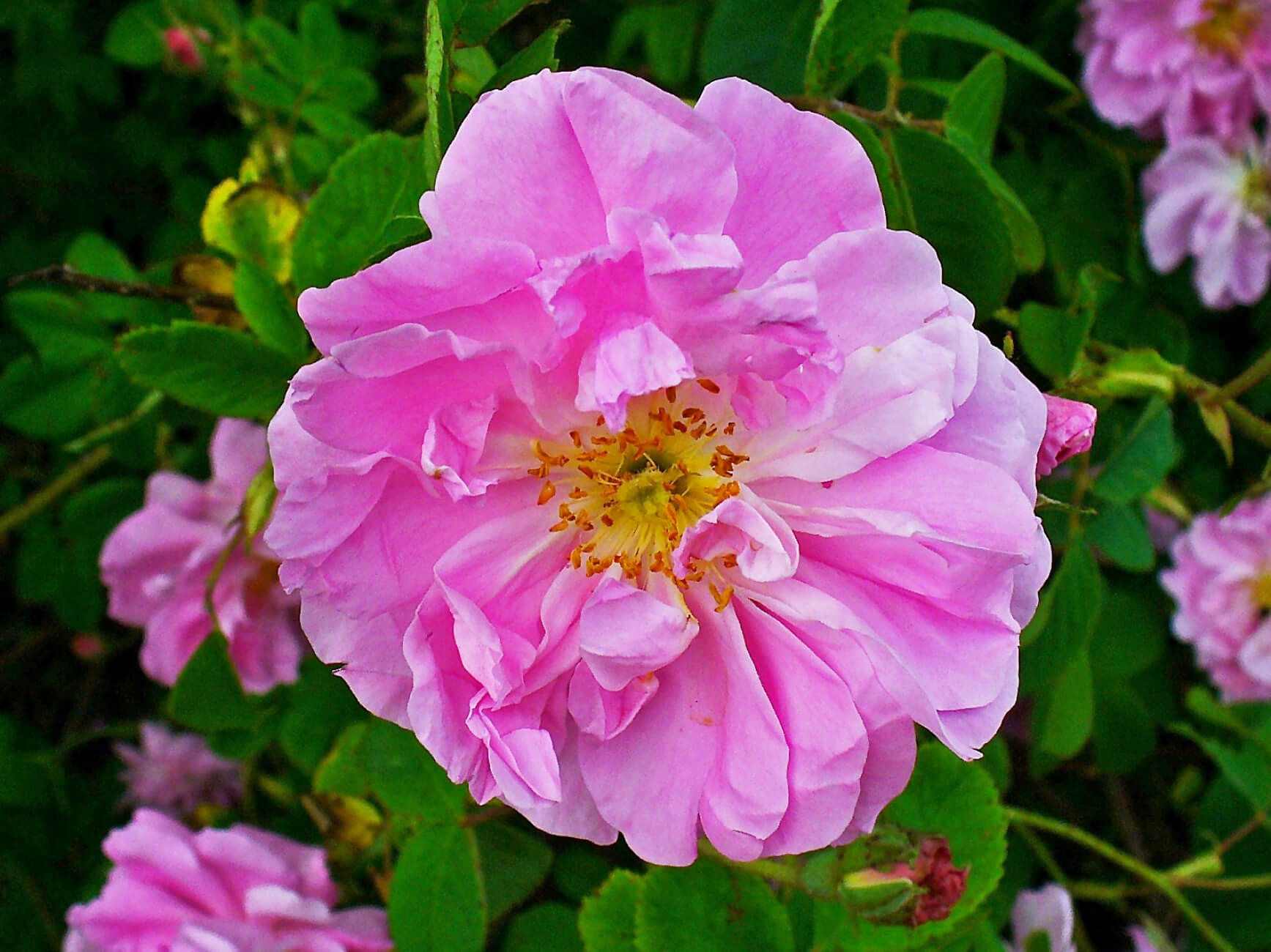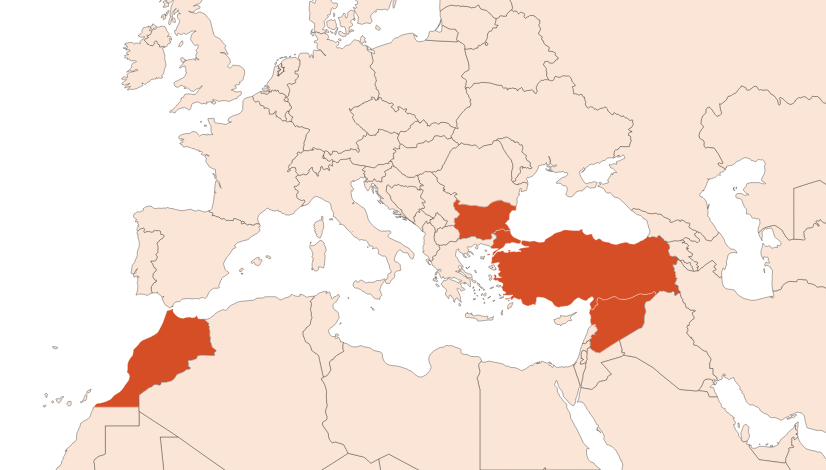
| Company | Ingredient Name | ID | Comments | Naturality | Certifications | Purity | Latin name | Treated part | Geographical origin | MOQ |
|---|---|---|---|---|---|---|---|---|---|---|
|
|
Absolue de Rose Damascena - 30 gr | - |
Visit website
|
- | - | - | - | - | - | |
|
|
ROSE Absolute Turkey | M_0040082 |
Visit website
|
Naturel | - | - | - | - | - | |
|
|
ROSE Absolute Turkey (decolourised) | M_0053278 |
Visit website
|
Naturel | - | - | - | - | - | |
|
|
ROSE Absolute Turkey (Methyl eugenol reduced) | M_0059765 |
Visit website
|
Naturel | - | - | - | - | - | |
|
|
ROSE | F2180 |
Visit website
|
Absolue |

|
- | Rosa x damascena Miller | Fleur | Bulgarie, Maroc, Turquie | - |
|
|
ROSE 67% | P00554435000 |
Visit website
|
Résinoide | - | Rosa x damascena Mill. | Fleur | Maroc | - | |
|
|
ROSE BY-ABSOLUE | F2240 |
Visit website
|
Absolue | - | Rosa x damascena Miller | Fleur | Turquie | - | |
|
|
ROSE BY-DECOLOURIZED | F2250 |
Visit website
|
Extrait | - | Rosa x damascena Miller | Fleur | Turquie | - | |
|
|
ROSE COSMETICS | E4421 |
Visit website
|
Cire | - | Rosa x damascena Miller | Fleur | Bulgarie, Maroc, Turquie | - | |
|
|
ROSE DECOLOREE | F2140 |
Visit website
|
Absolue | - | Rosa x damascena Miller | Fleur | Bulgarie, Maroc, Turquie | - |
General Presentation
-
CAS N° : 8007-01-0
-
EINECS number : 90106-38-0
-
FEMA number : 2989
-
Appearance : Yellow liquid
-
Density :
-
Volatility : Heart
-
Price Range : €€€€€
Physico-chemical properties
-
Optical rotation : Donnée indisponible
-
Vapor pressure : Donnée indisponible
-
Refractive Index @20°C : Donnée indisponible
-
Acid Value :
-
Flash Point :
Uses
Uses in perfumery :
Used in floral bouquets and women's fragrances. Often goes with jasmine notes. Use in all olfactory families.
Major Components :
- Phenyl ethyl alcohol (60 - 80%)
- Citronellol (5 - 10%)
- Geraniol (3 - 5%)
- Phenyl ethyl acetate (≈2%)
- Benzyl alcohol (≈1%)
- Isogeranyl butyrate (≈1%)
- Eugenol (≈2%)
- 4-Allylveratrole (≈1%)
- Farnesol (≈1%)

Photo credits: ScenTree SAS
Botanical name :
Rosa ×damascena Mill.
Synonyms : Rosa belgica Mill. // Rosa gallica var. damascena Voss
Botanical profile :
The Damascus rose, or damascena rose, is the flower of a shrub of the Rosaceae family and the genus Rosa.
Chemotypes :
Several species of rose can be extracted for the perfume industry :
Rosa centifolia or Rose de mai EO - Rose de Mai Absolute, grown in the region of Grasse, is the most prized of all rose species.
Rosa Damascena or Damask Rose Absolute - Damask Rose EO
Other widely used species, not necessarily in perfumery :
Rosa canina or dog rose, found in the temperate regions of Europe, Asia and Africa.
Rosa gallica, or French rose, native to Central Europe and Asia Minor.
Rosa moschata, or musk rose, native to Asia Minor and cultivated in Europe.
Rosa rugosa, or rugosa rose, native to Japan and China.
The genus Rosa contains globally about 250 species, and no less than 25 000 varieties!
Extraction process :
As for the Rose de Mai, this rose native to Syria is harvested from May to June and picked by hand one by one. The crop starts early in the morning, around 6am, and ends in the late morning. Ideally, the roses that are picked should be half open, to ensure a good extraction yield. They are placed in sacks before they are brought to the factory, where the bags are weighed. It is best to extract the fresh roses to produce the essential oil. Although, these can not all be extracted at once. Therefore, to avoid maceration problems, it is advisable to keep them fresh and protected from moisture.
Every day about 200 tons of roses can be extracted, combining hydrodistillations and volatile solvent extractions. The first extraction with hexane gives a concrete after removing the flowers from the extractor and evaporating the solvent. The concrete can be diluted in the alcohol in order to precipitate the waxes, by glazing the mixture with a temperature gradient of 140 °F. to 32 °F. The absolute is obtained after filtration and evaporation of the alcohol.
A steam distillation allows to collect an essential oil with a more citrus and fresh smell.
A rose absolute can be distilled to remove the insoluble compounds.
Other comments :
Unlike the essential oil, it contains a lot of Phenyl Ethyl Alcohol.
In 1762, the term ''Damask rose '' was introduced for the first time in Europe by Jean Hermann, who found a hybrid of this rose in Damascus, Syria.
Stability :
Solubility issues in perfumes
Aromatic compounds can be chromophoric and cause a coloration of the oil, especially in alkaline bases
The terpenes identified in this raw material can polymerize when they are oxidized
Regulations & IFRA
Allergens :
This ingredient is classified as an allergen under European Regulation 2023/1545, dated August 26, 2023.
Its presence must therefore be declared on product labels when it exceeds 0.001% in leave-on products and 0.01% in rinse-off products.
IFRA 51th :
This ingredient is restricted by the 51th amendment
Annexe I :
Some regulated synthetic ingredients are found in nature and in certain proportions in natural ingredients. This presence in nature has to be taken into account when calculating limits of use recommended by the IFRA. In case you do not know these concentrations, you can use the ones estimated by the IFRA. Here they are :
| List of regulated compounds contained in this ingredient | ||
|---|---|---|
| Regulated ingredient name | CAS N° | Estimated Concentration |
| Citronellyl acetate | 150-84-5 | 0,13 |
| Citronellyl acetate | 150-84-5 | 0,03 |
| Benzaldehyde | 100-52-7 | 0,02 |
| Benzaldehyde | 100-52-7 | 0,5 |
| Citral | 5392-40-5 | 0,16 |
| dl-Citronellol | 106-22-9 | 4,02 |
| dl-Citronellol | 106-22-9 | 4,7 |
| Eugenol | 97-53-0 | 0,65 |
| Eugenol | 97-53-0 | 1 |
| Geraniol | 106-24-1 | 1,64 |
| Geraniol | 106-24-1 | 2,7 |
| Methyl eugenol | 93-15-2 | 0,43 |
| Methyl eugenol | 93-15-2 | 0,5 |
| Benzyl benzoate | 120-51-4 | 0,02 |
| Farnesol | 4602-84-0 | 0,32 |
| Benzyl alcohol | 100-51-6 | 0,54 |
| Geranial | 141-27-5 | 0,07 |
| Neral | 106-26-3 | 0,08 |

